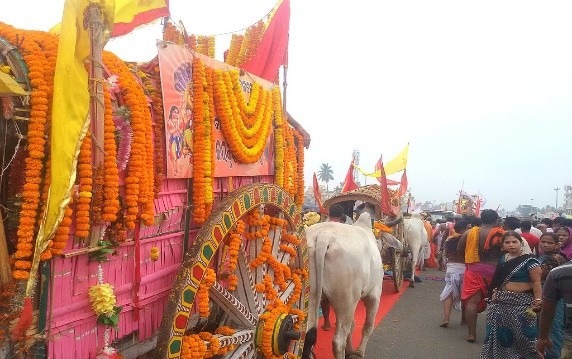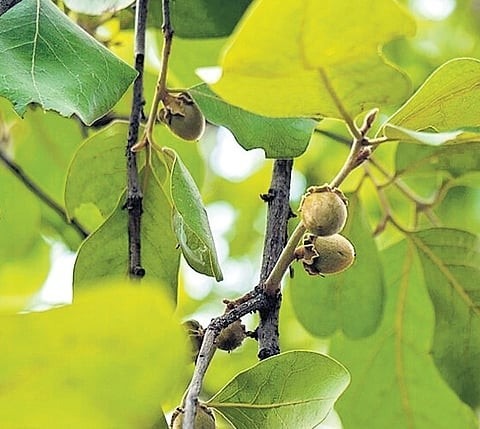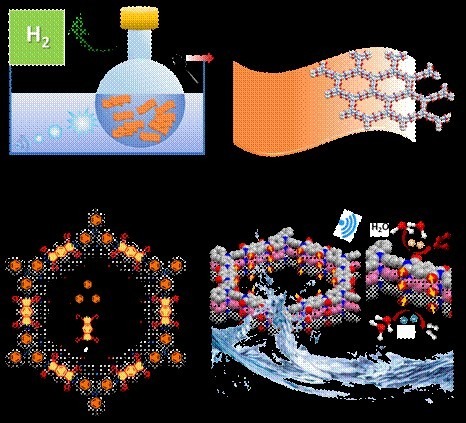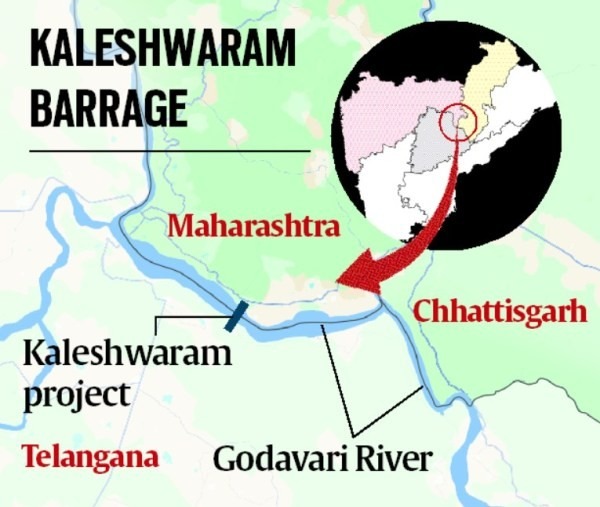Maize for Ethanol Production: Fuel vs Feed crisis
Syllabus:Agriculture
Context:
- India’s demand for maize-based ethanol has surged from 0.8 million tonnes in 2022–23 to 12.7 million tonnes in 2024–25, creating pressure on feed grain availability and triggering a food-versus-fuel debate.
Maize for Ethanol – The Shift
- Biofuels help reduce dependence on fossil fuels and cut emissions
- Maize and sugarcane are the primary feedstocks
- One tonne of maize yields approximately 380 litres of ethanol
- India is the fifth-largest ethanol producer and aims for 20 percent blending by 2025
Emerging Challenges
- Grain Shortage:
- India has moved from a surplus to a deficit in maize supply
- Maize prices rose sharply from ₹15,000 to ₹25,000 per tonne
- Feed Crisis:
- Livestock feed supply is strained, especially for poultry and dairy sectors
- Feed industries are demanding genetically modified maize imports for ethanol use
- Soybean Market Disruption:
- Distillers’ Dried Grains with Soluble (DDGS), a byproduct of ethanol, competes with soybean de-oiled cake
- Soybean prices have dropped below the Minimum Support Price, affecting farmer incomes
Global Lessons
- Mandates under the U.S. Renewable Fuel Standard and European policies have previously caused food price spikes and trade disruptions during global crises
Way Forward – A Balanced Approach
- Implement flexible ethanol blending targets that can be adjusted during periods of food inflation
- Promote second- and third-generation biofuels from agricultural waste, used cooking oil, and biomass
- Allow duty-free imports of genetically modified maize exclusively for ethanol, with safeguards
- Ensure feed security through buffer stocks and support for alternative proteins
- Protect farmer interests by enforcing MSPs and supporting crop diversification and direct income transfers
Conclusion:
- India’s clean energy goals through ethanol must be carefully aligned with national food and feed security. A research-driven, flexible policy focused on advanced biofuels is essential for sustainable agricultural and energy development.
Consider the following statements regarding the use of maize for ethanol production in India:
- One tonne of maize yields less ethanol than sugarcane on average.
- The DDGS byproduct from ethanol production is a complete substitute for maize in animal feed.
- India became a net importer of maize after ethanol blending targets were raised.
- Ethanol production from maize does not affect soybean markets directly.
Which of the above statements is/are correct?
- 1 and 3 only
B. 2 and 4 only
C. 3 only
D. 1, 2 and 4 only
Answer:C
Explanation:
- Statement 1 is incorrect: One tonne of maize yields around 380 litres of ethanol, but sugarcane ethanol yield is not directly comparable due to differences in processing and sucrose content.
- Statement 2 is incorrect: DDGS is a partial, not full, substitute for maize feed.
- Statement 3 is correct: Maize diversion to ethanol led India to become a net importer.
- Statement 4 is incorrect: DDGS has undercut soy DOC prices, directly impacting soybean markets
Vikramaditya I of Badami Chalukyas
Syllabus:History
 Context:
Context:
- A 7th-century inscription in Old Kannada, dating to the reign of Vikramaditya I of the Badami Chalukyas, was recently discovered near Madapura Lake in Davangere, Karnataka.
The inscription offers valuable insights into the fiscal system, land grants, and local governance structures during his rule.
Badami Chalukyas: A Historical Overview
- Origins and Legitimacy:
- Emerged as a native Kannada power in the Deccan
- Claimed descent from Ayodhya to enhance dynastic legitimacy
- Capital:Vatapi (modern-day Badami) in Karnataka
Key Rulers and Political History:
- Pulakesin I (543–566 CE):
- Founded the dynasty
- Fortified Vatapi as the capital
- Pulakesin II (609–642 CE):
- Most celebrated ruler
- Defeated Harshavardhana at the Narmada
- Established diplomatic ties with Sassanid Persia, depicted in Ajanta murals
- Vikramaditya I (644–681 CE):
- Son of Pulakesin II
- Reclaimed Vatapi from the Pallavas after his father’s defeat
- Consolidated control over southern kingdoms including Cholas, Pandyas, and Keralas
Administrative and Military Contributions
- Political Reorganisation:
- Restored centralized authority after a period of decline
- Appointed trusted feudatories (e.g., Singhavenna) to govern regions (as revealed by recent inscription)
- Military Successes:
- Defeated Narasimhavarman I of the Pallavas
- Reunified the Chalukya empire
- Strengthened maritime capability—Pulakesin II reportedly maintained a fleet of 100 ships
- Fiscal Policies:
- Revenue relied more on military expansion than intensive agriculture
- Land grants and taxation formed key components of governance
Religion and Culture
- Religious Patronage:
- Supported Shaivism, Vaishnavism, Shaktism, and Jainism
- Donations made to Jain institutions
- Pulakesin I performed Ashvamedha Yajna, asserting imperial authority
- Art and Architecture:
- Pioneered the Vesara style, blending Nagara and Dravida elements
- Built notable rock-cut and structural temples at Aihole, Badami, and Pattadakal
- Set the architectural foundation later expanded under Vikramaditya II and Kirtivarman
Legacy of Vikramaditya I
- Regarded as “Rajamalla” and “Yuddhamalla” (Warrior among Kings)
- His reign marked a revival of Chalukya dominance after internal strife and external invasions
- Laid the groundwork for the cultural and architectural flourishing of the later Chalukyas
With reference to the Badami Chalukyas, consider the following statements:
- Pulakesin II sent diplomatic envoys to the Roman Empire, which is depicted in the murals of Ellora caves.
- Vikramaditya I successfully defeated Narasimhavarman I and recaptured Vatapi.
- The Chalukyas primarily followed Shaivism and discouraged Jain patronage.
- The Vesara style of temple architecture emerged during the Badami Chalukya period.
Which of the above statements is/are correct?
A. 1 and 2 only
B. 2 and 4 only
C. 1, 2 and 3 only
D. 2, 3 and 4 only
Answer:B
Explanation:
- Statement 1 is incorrect – The Chalukyas sent envoys to Persia (Sassanid Empire), not Rome, and it is depicted in Ajanta, not Ellora.
- Statement 2 is correct – Vikramaditya I defeated Narasimhavarman I and reclaimed Vatapi.
- Statement 3 is incorrect – They patronized multiple religions, including Jainism.
- Statement 4 is correct – Vesara style originated under the Badami Chalukyas.
Unique Identification Authority of India
Syllabus:Polity
Context:
- The Unique Identification Authority of India (UIDAI), in collaboration with the National Informatics Centre (NIC) and National Testing Agency (NTA), conducted a successful Proof of Concept (PoC) for face authentication using Aadhaar during NEET-UG 2025. The initiative aims to enhance examination security and eliminate impersonation.
What is Aadhaar-Based Face Authentication?
- A biometric verification process that uses facial recognition linked to an individual’s Aadhaar profile for real-time authentication.
- Piloted during NEET-UG 2025 at select centres in Delhi.
Key Features of the Pilot:
- Contactless and real-time biometric verification of candidates
- Seamlessly integrated with NIC’s digital infrastructure and NTA’s exam protocols
- Achieved high accuracy in face matching using Aadhaar’s biometric database
- Prevented impersonation and streamlined candidate entry process
Significance:
- Security Reinforcement: Reduces scope for fraud and impersonation in high-stakes national exams
- Digital Governance in Education: Demonstrates potential for tech-enabled identity verification across public service delivery
- Scalability: Opens avenues for broader use in recruitment exams, e-governance, and public distribution systems
About UIDAI (Unique Identification Authority of India)
- Established: Statutory body under the Aadhaar (Targeted Delivery of Financial and Other Subsidies, Benefits and Services) Act, 2016
- Operational Since: July 12, 2016
- Ministry: Ministry of Electronics and Information Technology (MeitY)
- Headquarters: New Delhi
- Core Functions:
- Aadhaar Issuance: Provides 12-digit Unique Identification Numbers to residents
- Authentication Services: Enables biometric (fingerprint, iris, face) and demographic-based identity authentication
- Identity Management: Ensures security, privacy, and confidentiality of Aadhaar data
- Policy and Operational Oversight: Formulates procedures for enrolment, update, usage, and grievance redressal
- Digital Inclusion: Facilitates access to welfare schemes, subsidies, and financial inclusion through verified identity
With reference to Aadhaar-based biometric authentication, consider the following statements:
- Face authentication is contactless and can be conducted in real-time without physical intervention.
- Only fingerprint and iris scans are legally permitted for Aadhaar authentication under the Aadhaar Act, 2016.
- UIDAI is responsible for maintaining both demographic and biometric data of Aadhaar holders.
Which of the statements given above is/are correct?
A. 1 and 3 only
B. 2 and 3 only
C. 1 only
D. 1, 2 and 3
Answer:A
Explanation:
- Statement 1 is correct – face authentication is contactless and real-time.
- Statement 2 is incorrect – the Aadhaar authentication ecosystem now legally permits face, fingerprint, and iris authentication.
- Statement 3 is correct – UIDAI manages demographic (name, age, address, etc.) and biometric (iris, fingerprint, face) data.
INS Tamal
Syllabus:Defence
 Context:
Context:
- India is set to receive INS Tamal, its second advanced stealth frigate under the India–Russia Krivak-III class deal, marking a significant step in Indo-Russian naval collaboration and India’s maritime modernization.
About INS Tamal
- Class & Type: Krivak-III class advanced stealth frigate
- Displacement: 3,900 tonnes
- Built by: Yantar Shipyard, Kaliningrad, Russia
- Project Status: Part of a four-frigate deal (2016)
- Two frigates built in Russia (INS Tushil and INS Tamal)
- Two under construction at Goa Shipyard Ltd under technology transfer
Key Capabilities and Features
- Stealth Technology: Suppressed radar, acoustic, and infrared signatures for enhanced survivability
- Speed: Capable of speeds exceeding 30 knots
- Weapon Systems:
- BrahMos Supersonic Cruise Missiles (range: ~450 km)
- Shtil Surface-to-Air Missiles (SAMs)
- Anti-submarine torpedoes and rocket launchers
- Helicopter Operations:
- Can host Kamov-28 and Kamov-31 for anti-submarine warfare (ASW) and airborne early warning (AEW)
- Automation: Advanced systems reduce crew workload and enhance operational efficiency
Strategic Importance
- Force Projection: Expands India’s blue-water navy capability across air, surface, sub-surface, and electronic warfare domains
- Regional Stability: Enhances naval deterrence, particularly in the Arabian Sea and Indo-Pacific, amid growing maritime competition
- Make in India Integration:
- Indigenous construction of sister ships Triput and Tavasya at Goa Shipyard signifies progress in domestic defence manufacturing
- Reflects effective foreign technology absorption and joint production in defence
- Predecessor: INS Tushil
- Commissioned in December 2024
- Currently deployed at Karwar Naval Base
INS Tamal, recently in news, is significant in strengthening India’s maritime capability. Which of the following correctly describes its features?
- It is a nuclear-powered submarine equipped with ballistic missiles.
- It is an advanced stealth frigate built under the Krivak-III class deal with Russia.
- It is indigenously designed and constructed entirely at Mazagon Dock Limited.
- It is part of India’s aircraft carrier programme aimed at blue-water dominance.
Select the correct answer:
A) 1 and 3 only
B) 2 only
C) 2 and 4 only
D) 1, 3 and 4 only
Answer: B) 2 only
Explanation:
- INS Tamal is not a nuclear-powered submarine. It is a stealth frigate, not a submarine, and does not carry ballistic missiles. This description fits a class like the Arihant-class SSBNs, not Krivak-III class frigates.
- INS Tamal is indeed a Krivak-III class advanced stealth frigate, built in Russia at Yantar Shipyard, under a 2016 India–Russia agreement.
- INS Tamal was not built at Mazagon Dock. It was constructed in Russia. Only the other two frigates (Triput and Tavasya) under the same deal are being built indigenously at Goa Shipyard Ltd., not Mazagon Dock.
- INS Tamal is a frigate, not an aircraft carrier, and thus not part of India’s aircraft carrier programme. While it does contribute to India’s blue-water capabilities, it is not directly linked to the carrier programme.
Nabakalebara Ritual
Syllabus:Art and Culture
Context:
- The inauguration of the Digha Jagannath Temple in West Bengal has stirred controversy, particularly over its reference as “Jagannath Dham” and allegations that leftover sacred wood from the 2015 Nabakalebara ritual in Puri was improperly used for idol-making.
About Nabakalebara Ritual:

- Meaning: Nabakalebara means “new body” — a sacred ritual where the wooden idols of Lord Jagannath, Balabhadra, Subhadra, and Sudarshana are replaced.
- Frequency: Held every 12 or 19 years, based on the lunar calendar, specifically when an extra Ashadha month (Adhimasa) occurs.
Key Ritual Elements:
- Astrological Timing: Determined by rare calendrical alignments in the Hindu lunar calendar.
- Sacred Wood (Daru):
- Special neem trees selected based on traditional symbols (e.g., chakra, conch).
- Identified and retrieved by Daitapati servitors in a process called Banajaga Yatra.
- Idol Making:
- Logs transported ceremonially to Puri.
- Biswakarma artisans carve new idols in secrecy.
- Brahma Padartha (divine essence) is ritually transferred from old to new idols during a secret midnight ceremony.
- Burial: Old idols are respectfully buried in Koili Baikuntha, within the temple premises.
Philosophical & Cultural Significance:
- Reflects Hindu concepts of rebirth, impermanence, and cyclical time.
- Attracts millions of pilgrims during Rath Yatra, particularly in Nabakalebara years.
Controversy at Digha:
- Allegations claim idols at Digha Temple were made using leftover sacred wood from Puri’s 2015 Nabakalebara — considered a breach of tradition and sanctity.
- The Odisha government has initiated an official probe into the matter.
The recent controversy surrounding the Digha Jagannath Temple in West Bengal has raised concerns regarding the use of sacred wood from the Nabakalebara ritual. Which of the following statements is/are correct about the Nabakalebara ritual?
- The Nabakalebara ritual is performed to replace the wooden idols of Lord Jagannath, Balabhadra, Subhadra, and Sudarshana with new ones.
- The ritual is conducted every 12 years based on the occurrence of two Asadha months in a year.
- The sacred wood used for making the new idols is selected from neem trees, based on divine signs.
- The transfer of Brahma Padartha (divine essence) is conducted openly during the day in a public ceremony.
Select the correct answer:
- A) 1 and 2 only
B) 2 and 3 only
C) 1, 3, and 4 only
D) 1, 2, and 3 only
Answer:D) 1, 2, and 3 only
Explanation:
- The Nabakalebara ritual involves replacing the idols of Lord Jagannath and other deities with new ones made from specific sacred wood (Option 1).
- It is conducted every 12 or 19 years based on the lunar calendar, specifically when two Asadha months occur (Option 2).
- The sacred wood, typically neem trees, is selected based on divine signs and the required marks (Option 3).
- The Brahma transfer process happens secretly, not openly in public during the day (so Option 4 is incorrect).
Tendu Leaves
Syllabus:Science
- Chhattisgarh has raised concerns over the increasing smuggling of tendu leaves from neighboring states. This issue is driven by the highest procurement price of ₹5,500 per standard bag in the region, which has fueled illegal trade during the peak collection season.

About Tendu Leaves:
What are Tendu Leaves?
- Tendu (scientific name: Diospyros melanoxylon), also known as “Green Gold,” is a non-timber forest product (NTFP) primarily used for wrapping beedis (hand-rolled cigarettes).
Regional Growth and Production:
- Tendu leaves are found abundantly in central India, with significant production in:
- Madhya Pradesh – 25% of India’s total production
- Chhattisgarh – 20%
- Odisha – 15–20%
- Maharashtra – 10%
Key Features of Tendu Leaves:
- Tendu grows as a shrub or small tree, easily identifiable by its broad leaves.
- A standard bag contains 1,000 bundles, each comprising 50 leaves.
- The highest-quality tendu leaves are typically sourced from southern Chhattisgarh, particularly districts like Dantewada and Sukma.
Uses and Applications:
- Tendu leaves are primarily used in beedi manufacturing, making them a crucial part of the rural tobacco economy.
- The collection and processing of tendu leaves provide over 100 million person-days of employment annually, mostly benefiting tribal communities.
- Challenges and Issues:
- Smuggling: The high procurement price in Chhattisgarh (₹5,500 per standard bag) compared to neighboring states has led to a rise in illegal smuggling activities.
- Exploitation: Despite the lucrative trade, tendu leaf collectors earn meager wages, averaging ₹60 per day, exacerbating the exploitation of workers.
- Declining Demand: Factors such as growing health concerns about smoking, increasing taxes, and the availability of alternative products have led to a decline in the demand for tendu leaves.
Chhattisgarh’s concern over the smuggling of tendu leaves has gained prominence, particularly due to its high procurement price. Which of the following statements regarding tendu leaves is/are correct?
- Tendu leaves are primarily used in beedi manufacturing, contributing significantly to the rural tobacco economy.
- Tendu leaves are mostly sourced from Chhattisgarh, where they are collected and processed by migrant laborers.
- The smuggling of tendu leaves is fueled by the high procurement price of ₹5,500 per standard bag in Chhattisgarh compared to neighboring states.
- Despite the high value trade, tendu leaf collectors receive wages above the minimum wage threshold, ensuring fair compensation.
Select the correct answer:
- A) 1 and 3 only
B) 2 and 4 only
C) 1, 3, and 4 only
D) 1, 2, and 3 only
Answer: A) 1 and 3 only
Explanation:
- Statement 1: Tendu leaves are primarily used for beedi manufacturing, which is a significant part of the rural tobacco economy.
- Statement 2: Tendu leaves are mostly sourced from Chhattisgarh, but they are primarily collected by tribal communities, not migrant laborers.
- Statement 3: The high procurement price of ₹5,500 per standard bag in Chhattisgarh compared to neighboring states has led to smuggling.
- Statement 4: Despite the lucrative trade, tendu leaf collectors earn low wages (₹60 per day), leading to exploitation of workers.
Metal-Free Catalyst for Hydrogen Fuel Production
Syllabus:Science
 Context:
Context:
- Indian researchers have made a groundbreaking advancement in clean energy by developing a metal-free catalyst for hydrogen fuel production using mechanical energy. This development aligns with India’s National Green Hydrogen Mission and pushes forward sustainable hydrogen technology.
About the Metal-Free Catalyst for Hydrogen Fuel Production:
What is It?
- This innovative catalyst is a donor-acceptor covalent organic framework (COF) that operates as a metal-free piezocatalyst. It can split water molecules under mechanical pressure—such as vibrations or movement—to produce hydrogen gas (H₂).
Developed by:
- This breakthrough was developed by the Jawaharlal Nehru Centre for Advanced Scientific Research (JNCASR) in Bengaluru, led by Prof. Tapas K. Maji, in collaboration with IISER Pune and Wrocław University of Science and Technology, Poland.
Key Features:
- Metal-Free: The catalyst uses organic molecules, specifically TAPA (donor) and PDA (acceptor), connected via imide bonds, replacing traditional metals.
- Ferrielectric Ordering (FiE): This feature generates intense internal electric fields that drive the catalytic process, enabling the water splitting reaction.
- Porous Architecture: The sponge-like structure facilitates efficient water flow and promotes charge separation during the reaction.
- Mechanically Stimulated: The catalyst produces electron-hole pairs when subjected to pressure, enhancing the efficiency of water splitting.
Significance:
- Eco-Friendly: By using sustainable organic materials instead of costly and toxic metals, this innovation offers an environmentally friendly alternative.
- Energy Efficient: The catalyst utilizes ambient mechanical energy—like vibration or pressure—for hydrogen production, making the process energy-efficient.
- Supports National Green Hydrogen Mission: This development reinforces India’s commitment to clean energy and energy independence.
- Scalable Innovation: The catalyst presents a cost-effective, practical alternative to metal-based hydrogen production technologies, making it a scalable solution for the future.
Indian researchers have developed a metal-free catalyst for hydrogen fuel production. Which of the following statements are correct about this breakthrough?
- The catalyst uses a donor-acceptor covalent organic framework (COF) to split water molecules for hydrogen production.
- The catalyst is developed using toxic and expensive metals to enhance efficiency.
- The catalyst operates by utilizing mechanical energy (such as vibration or pressure) to produce hydrogen gas.
- The breakthrough aligns with India’s National Green Hydrogen Mission and contributes to clean energy technology.
Select the correct answer:
A) 1, 3, and 4 only
B) 1 and 2 only
C) 2, 3, and 4 only
D) 1, 2, and 3 only
Answer: A) 1, 3, and 4 only
Explanation:
- Statement 1 is correct: The catalyst uses a donor-acceptor COF to split water molecules for hydrogen production.
- Statement 2 is incorrect: The catalyst is metal-free and does not use toxic or expensive metals.
- Statement 3 is correct: The catalyst is activated by mechanical energy (vibration or pressure) to produce hydrogen.
- Statement 4 is correct: The development supports India’s National Green Hydrogen Mission and contributes to clean energy innovation.
Kaleshwaram Lift Irrigation Project
Syllabus:Geography
Context:
 The National Dam Safety Authority (NDSA) has identified significant structural damage in the Kaleshwaram Lift Irrigation Project (KLIP) barrages in Telangana, urging immediate repairs and a comprehensive safety review.
The National Dam Safety Authority (NDSA) has identified significant structural damage in the Kaleshwaram Lift Irrigation Project (KLIP) barrages in Telangana, urging immediate repairs and a comprehensive safety review.
About Kaleshwaram Lift Irrigation Project (KLIP):
What is KLIP?
- KLIP is the world’s largest multi-stage lift irrigation project designed to divert water from the Godavari River to drought-affected regions in Telangana.
Location:
Located at Kaleshwaram in Jayashankar Bhupalpally district, Telangana, KLIP draws water from the confluence of the Pranahita and Godavari rivers.
Lift Irrigation Technology:
KLIP uses advanced lift irrigation technology to pump water from lower elevations to higher regions using massive pumps. It includes four major pump stations, with the Ramadugu station being Asia’s largest, powered by seven 140 MW pumps from BHEL.
Key Features of KLIP:
- Largest Irrigation Project: The project irrigates over 18 lakh acres of land in Telangana, drawing water from the confluence of the Godavari and Pranahita rivers.
- Infrastructure: The project includes a 500 km canal network spanning 13 districts, along with major barrages at Medigadda, Annaram, and Sundilla.
- Water Capacity: KLIP has a total water capacity of 240 TMC, with 195 TMC from the Medigadda Barrage and the remainder from the Yellampalli reservoir and groundwater.
- Multi-purpose Use: The project supports agriculture (169 TMC), supplies water to Hyderabad city (30 TMC), industry (16 TMC), and provides drinking water to rural areas (10 TMC).
About National Dam Safety Authority (NDSA):
What is NDSA?
The NDSA is a statutory body established under Section 8(1) of the National Dam Safety Act, 2021, by the Central Government. It is responsible for ensuring dam safety across India by formulating national policies and overseeing compliance with safety standards.
Headquarters: New Delhi
Key Functions of NDSA:
- Dam Regulation: Develops national policies for the design, construction, operation, and maintenance of dams.
- Dispute Resolution: Mediates conflicts between State Dam Safety Organisations (SDSOs) or between SDSOs and dam owners.
- Inspection & Oversight: Conducts periodic safety inspections of large dams.
- Disaster Preparedness: Develops emergency action plans for dam-related disasters.
- Public Awareness: Runs campaigns to raise awareness about dam safety and flood risks.
- Technical Support: Provides research, guidelines, and capacity building for dam design and hydrological safety.
Which of the following statements regarding the Kaleshwaram Lift Irrigation Project (KLIP) in Telangana is/are correct?
- KLIP is the world’s largest multi-stage lift irrigation project, aimed at diverting water from the Godavari River to drought-prone regions in Telangana.
- The project uses gravity-based irrigation systems to irrigate the agricultural fields.
- The Ramadugu pump station in KLIP is Asia’s largest pump station, powered by 7 x 140 MW pumps from BHEL.
- KLIP serves only agricultural purposes and does not supply water for industrial or urban use.
Select the correct answer:
A) 1 and 3 only
B) 1, 3, and 4 only
C) 1 and 2 only
D) 1, 2, and 4 only
Answer: A) 1 and 3 only
Explanation:
- Statement 1 is correct: KLIP is indeed the world’s largest multi-stage lift irrigation project aimed at diverting water from the Godavari to drought-prone regions in Telangana.
- Statement 2 is incorrect: KLIP uses lift irrigation technology, not gravity-based irrigation, to pump water to higher regions.
- Statement 3 is correct: The Ramadugu pump station, part of KLIP, is the largest in Asia, with 7 x 140 MW pumps from BHEL.
Statement 4 is incorrect: KLIP supplies water for multiple purposes, including agriculture, industry, and urban consumption
India becomes 1st country in world to develop genome-edited rice varieties
Syllabus:Science
- India has achieved a significant milestone by becoming the first country globally to develop genome-edited rice varieties. Agriculture Minister Shivraj Singh Chouhan recently launched the first two genome-edited rice varieties, developed by institutions under the Indian Council of Agricultural Research (ICAR).
- During the event in New Delhi, the Minister expressed his congratulations to the agricultural scientists involved, highlighting the nation’s confidence in their capabilities.
- He emphasized that this groundbreaking research will contribute significantly to Prime Minister Narendra Modi’s vision of a “Viksit Bharat.”
- Minister Chouhan further noted that to meet the growing nutritional demands of India’s increasing population, the country must enhance its agricultural production.
- These new rice varieties are designed not only to benefit farmers but also the general public.
- They have been specifically developed for cultivation in multiple states, including Andhra Pradesh, Bihar, Uttar Pradesh, Telangana, Karnataka, Tamil Nadu, Chhattisgarh, Maharashtra, West Bengal, and Madhya Pradesh.
- The first variety, DRR Dhan 100 Kamala, is derived from the popular Samba Mahsuri rice.
- This variety matures 15 to 20 days earlier than conventional varieties and yields 25% more produce
- The second variety, Pusa DST Rice 1, is highly tolerant to salinity and alkalinity, making it suitable for cultivation in saline conditions.
- This variety also offers a 30% higher yield in such environments.
- The widespread cultivation of these two varieties, covering approximately 5 million hectares, is projected to produce an additional 4.5 million tons of paddy.
- Minister Chouhan described the launch of these varieties as a historic event, noting that they will reduce production costs while increasing overall yield.
- These innovations are expected to play a vital role in addressing the nutritional needs of India’s growing population.
- ICAR has stated that these varieties represent a major step forward in creating climate-resilient, high-yield agricultural practices.
- The organization also affirmed that they will play a leading role in driving the second green revolution in India.
India has recently become the first country in the world to develop genome-edited rice varieties. These varieties were launched by the Indian Council of Agricultural Research (ICAR). Which of the following statements regarding the two genome-edited rice varieties developed by ICAR is/are correct?
- DRR Dhan 100 Kamala is derived from Samba Mahsuri, matures 15-20 days earlier, and yields 25% more production.
- Pusa DST Rice 1 is salinity and alkalinity-tolerant, with a 30% higher yield under saline conditions.
- These varieties are primarily developed for the states of Uttar Pradesh, Bihar, and Maharashtra.
- The cultivation of these varieties in 5 million hectares is expected to produce 4.5 million tons of additional paddy.
Select the correct answer:
- A) 1 and 2 only
B) 1, 2, and 4 only
C) 1, 2, and 3 only
D) 2 and 4 only
Answer: B) 1, 2, and 4 only
Explanation:
- Statement 1: DRR Dhan 100 Kamala is derived from Samba Mahsuri, matures 15-20 days earlier, and yields 25% more production. (Correct)
- Statement 2: Pusa DST Rice 1 is salinity and alkalinity-tolerant, with a 30% higher yield under saline conditions. (Correct)
- Statement 3: These varieties are developed for multiple states, not just Uttar Pradesh, Bihar, and Maharashtra. (Incorrect)
- Statement 4: Cultivation in 5 million hectares is expected to produce 4.5 million tons of additional paddy. (Correct)
